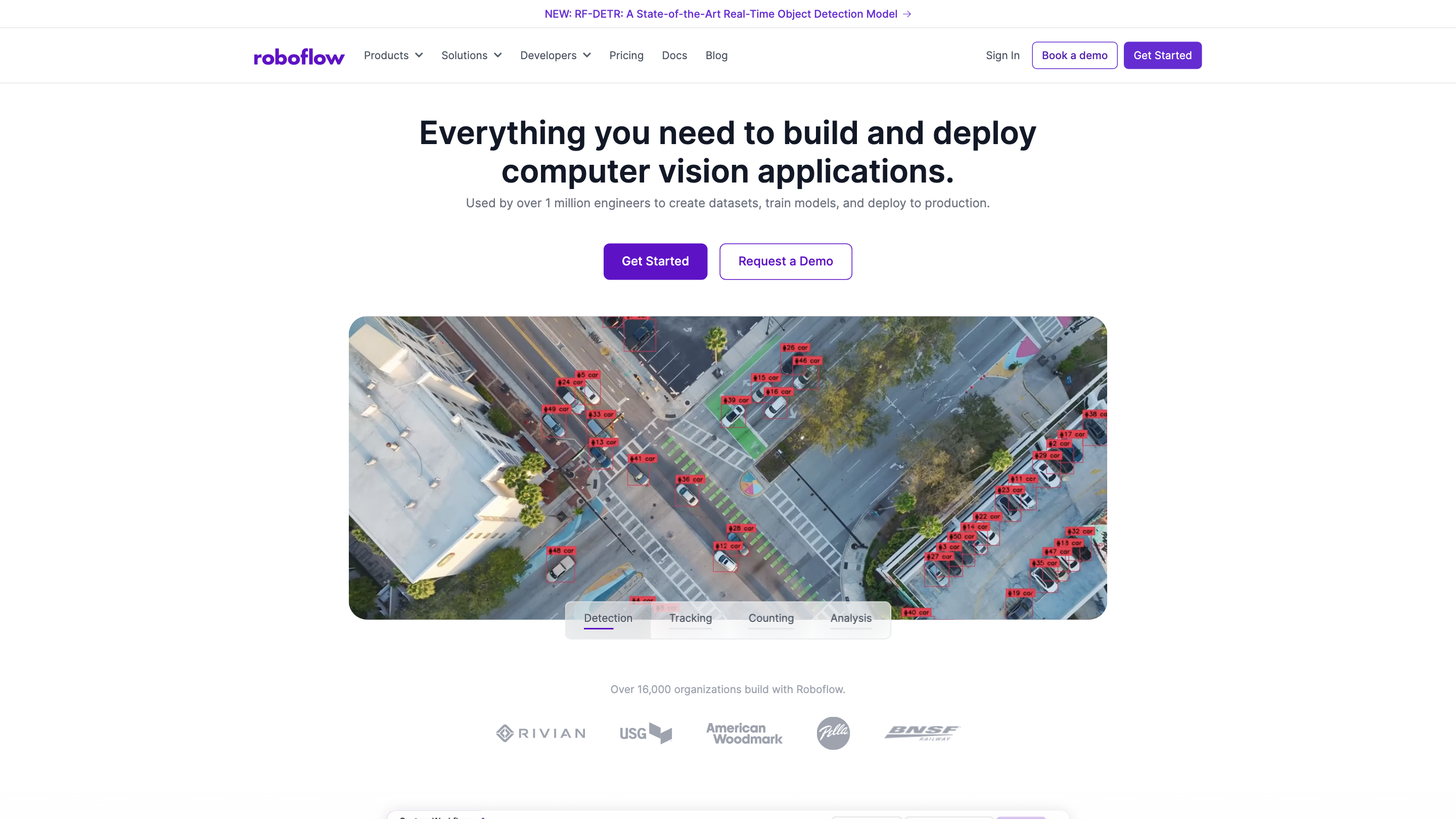Roboflow
Open siteImage Generation & Editing
Introduction
Give your software the power to see objects in images and video.
Roboflow Product Information
Roboflow is a comprehensive computer vision platform for developers and enterprises to build, train, and deploy vision applications. It provides end-to-end tooling for creating datasets, annotating data with AI-assisted labeling, training models with multiple sizes, and deploying inference via hosted APIs or edge devices. The platform is used by a wide range of industries and emphasizes scalable infrastructure, analytics, and collaboration to accelerate vision projects from prototyping to production.
How Roboflow Works
- Create and curate datasets. Import, organize, and annotate images; generate augmented variants to improve model generalization.
- Annotate efficiently. Utilize AI-assisted labeling tools to speed up labeling, review, and consensus building.
- Train models. Choose from multiple model sizes and training options; compare performance and identify data gaps.
- Deploy your model. Run models on Roboflow Inference (hosted API) or deploy to the edge; test with real-time or video/image data.
- Monitor and iterate. View metrics like inference volume, confidence, and per-prediction results to guide data collection and model improvements.
Roboflow integrates with popular data sources, annotation formats, and deployment targets, enabling seamless pipelines from data preparation to production inference.
Core Use Cases
- Dataset creation, labeling, and augmentation
- Training and evaluating computer vision models
- Deploying models via hosted API or edge devices
- Integrating CV models into larger applications with APIs and SDKs
- Industry-specific deployments across manufacturing, logistics, automotive, healthcare, and more
How It Helps Teams
- Accelerates AI vision projects with an integrated workflow
- Provides scalable infrastructure for training and deployment
- Offers analytics to understand data quality and model performance
- Supports collaboration with labeling and review workflows
Safety and Compliance
- Enterprise-grade security and compliance features; data protection in transit and at rest; SOC 2 Type 2, HIPAA considerations, and enterprise controls are highlighted in their materials.
Core Features
- End-to-end computer vision workflow: annotate, train, deploy, and monitor
- AI-assisted annotation to speed labeling
- Dataset versioning, augmentation, and management
- Multiple model sizes and training options for fast iteration or high accuracy
- Hosted inference API with easy integration
- Edge deployment capabilities for on-device inference
- Built-in analytics and monitoring for model performance
- Integrations with cloud providers and common data formats
- Industry-ready templates and use-case examples
- Collaboration tools for teams and enterprise governance
Related Resources and Ecosystem
- Model zoo and pre-trained models (RF-DETR, YOLO variants, SAM, etc.)
- Notebooks, supervision tools, and inference servers for building and testing CV apps
- Documentation and community support including user forums and changelogs
- Deployment options across cloud, edge, and on-prem environments
